コラム
落合憲弘
John Sypal
タカザワケンジ
なぎら健壱

Although the panoramic frame is a kind of trick, rather than rely on it I try instead to thrust the full potential of the snapshot to the fore. Once I began looking at these streets in this slender frame, they took on an expansiveness, as things that had once been cut out from the picture enter the frame.
-Hiroyoshi Yamazaki (Nippon Camera, Feb.1993)
A photograph is the result of framing two things at once: Space and Time.
In terms of physics, Time is framed by shutter speed (exposure).
Space, as our eyes understand it in a photograph, is framed by a combination of focal length and the total surface area which a light-sensitive material is exposed.
(The standard 35mm film frame we’re familiar with is a 24mm by 36mm rectangle.)
The way Time was framed on Tokyo’s streets in Hiroyoshi Yamazaki’s book Crossroad is a traditional: fast and fill-flashed.
It’s how he framed Space that helps set these images apart. To get a wider view of the city, Yamazaki stretched out the standard 35mm frame by combining 135 film with a medium format SLR. The generosity of this elongated frame made more room for the stuff of life- and by the looks of it, Shinjuku, Shibuya, and Asakusa of the early 1990s had a lot to offer a photographer.
Tokyo in Yamazaki’s Crossroad is bright and busy. Part of this is due to how he predominantly photographed on sunny days- another reason is thanks to the way his massive flash popped so much visual information from the shadows. Here, the bustle of this city spreads across the pages. His panoramic format gives ample space for connections to be made. The streets are often crowded- but just the right amount. They’re alive.
I’ve spent a lot of time with this book, and in each viewing, I am captivated by how the expressions of these Tokyoites shine. Does fill-flash just simply make everything look better?
The innocent dynamism of the pre-internet pedestrians Yamazaki captured is, in our age of blurred-out faces in the nightly news and media (in Japan at least) a joy to see.
Like any street photography collection, time-capsule aspect of the work has a charm which only gets better as time passes.
Near his profile at the end of the book you can see a picture of his camera setup. For this series Yamazaki put a 35mm film adapter into a 6x6 Bronica SLR. From a technical sense, the resolving power of this medium-format lens allows for images of greater clarity and depth of field than a standard 35mm camera allows. In practice though I don’t think the average person understands how cumbersome this setup would be. On a Zenza Bronica SLR the film traverses not across, like in a standard 35mm SLR, but up/down. Therefore, to take a horizontal panorama, the camera had to be held at a right angle. This isn’t impossible, but it means that instead of being able to look down, the waist-level finder is now off to the side. What’s more, the focusing screen of this camera is, due to its mirror, reversed (this is why I can’t shoot 6x6 TLR/SLRs myself). So, not only did Yamazaki need to hold the camera on its side, everything was backwards when looking through the finder. That his framing feels so natural and effortless is a testament to his skills- and familiarity with his camera.
Some notes on the book’s construction: The incorporation of a contact sheet in the book cover design is brilliant. The book’s printing is crisp and allows for detailed examination of the images. Since Yamazaki made photographs both horizontally and vertically, its square layout is well considered. While a thin, long and all-horizontal book could be interesting, the inclusion of vertically-oriented pictures provides welcome variety.
In his statement in Nippon Camera magazine, Yamazaki admits that his use of the panorama is a sort of “trick”, but in his acceptance of the format’s inherent benevolence, he was able to both elevate his approach beyond a simple gimmick into a receptor that matched the energy of times. That’s a challenge for any photographer- and that he succeeded so well is why I can’t recommend this book enough.
Crossroad is simply a masterpiece.
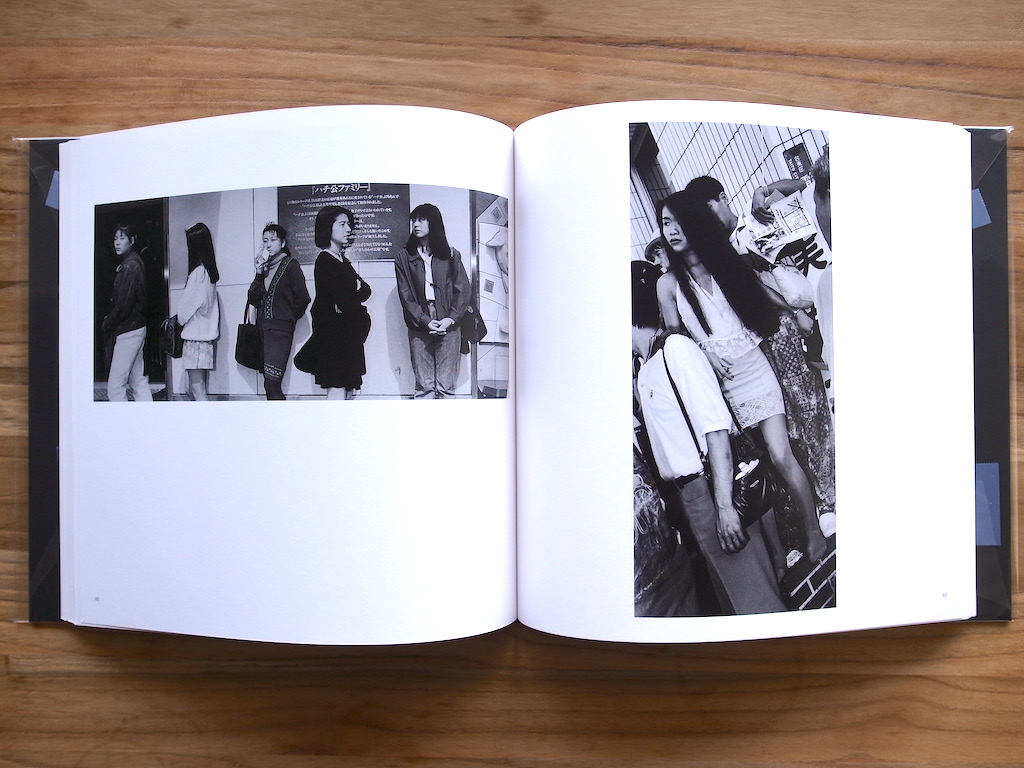
山崎弘義『日本カメラ』1995年2月号より
- パノラマのフレームが一種の仕掛けだが、それに頼らずにスナップショット本来の力を前面に出すように心掛ている。細長いフレームで街路を見るようになってから、今まで切り落とされていた事物が入り込んむようになり、広がりは出たのようだ。
写真とは、空間と時間という2つのものを同時にフレーミングした結果です。
物理学的に言えば、時間はシャッタースピード(露出)によってフレーミングされます。人間の目が写真で理解する空間は、焦点距離と感光材料が露光される総面積の組み合わせによってフレーミングされるのです(標準的な35mm判フィルムのフレームは、24mm×36mmの長方形です)。
山崎弘義さんの写真集『CROSSROAD』(蒼穹舎、2019年)における東京の街角での時間のフレーミングは伝統的なものであると言えます。

しかし、山崎さんが「空間」をどのようにフレーミングしたかがこの写真を際立たせています。街をより広く見るために、山崎さんは135フィルムと中判カメラを組み合わせることで、標準的な35mmのフレームを引き伸ばしました。 この細長いフレームの寛大さは、生活用品を入れるスペースを増やし、1990年代初頭の新宿、渋谷、浅草は、写真家に与えるものがたくさんあったように見えます。
『CROSSROAD』に写る東京は明るく賑やかです。明るい理由のひとつは山崎さんが晴れた日に撮影することが多かったからであり、もうひとつは、彼の巨大なフラッシュが影から多くの視覚情報を弾き出したからです。
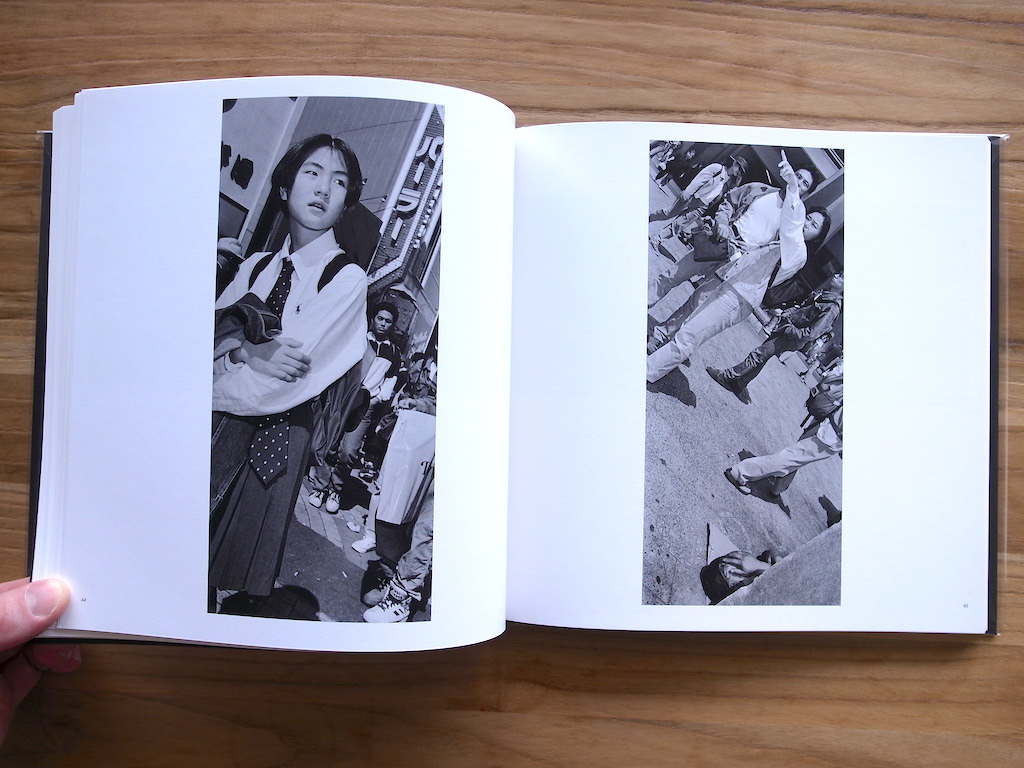
この本では街の喧騒がページ全体に広がっており、パノラマのフォーマットは「つながり」を作るための十分なスペースを与えています。混雑した通りを行き交う人々が生き生きとしており、ワイドな東京が写し出されています。
私はこの本と多くの時間を過ごしてきましたが、見るたびに、このページにいる東京の人々の表情の輝きに魅了されます。日中シンクロを使えば、単純に何でもよく見えるのでしょうか…。
山崎さんが捉えたインターネットやスマホが登場する以前の歩行者たちの無邪気な躍動感は、肖像権関係でニュースやメディアで顔にボカしがかかる現代において、見る喜びを与えてくれるようです(顔にボカしが入るのは日本だけのような気もします)。また他のストリート写真集と同様、タイムカプセルのような側面もあり、時が経てば経つほどその魅力は増すばかり。
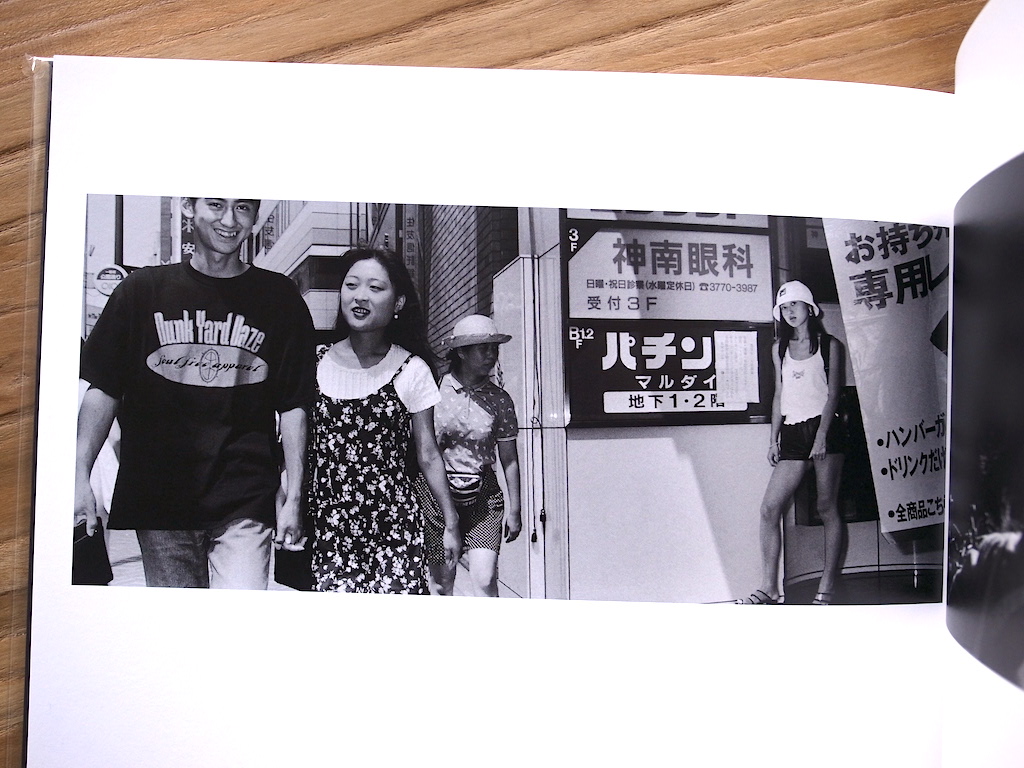
巻末には山崎さんが使っていたカメラの写真が掲載されています。この〈CROSSROAD〉シリーズは、6×6のブロニカという中判一眼レフカメラにアダプターで35mmフィルムアダプターを装着し撮影されています。技術的な意味では、この中判レンズの解像力は、標準的な35mmカメラでは不可能なほど鮮明で被写界深度の深い画像を可能にしています。
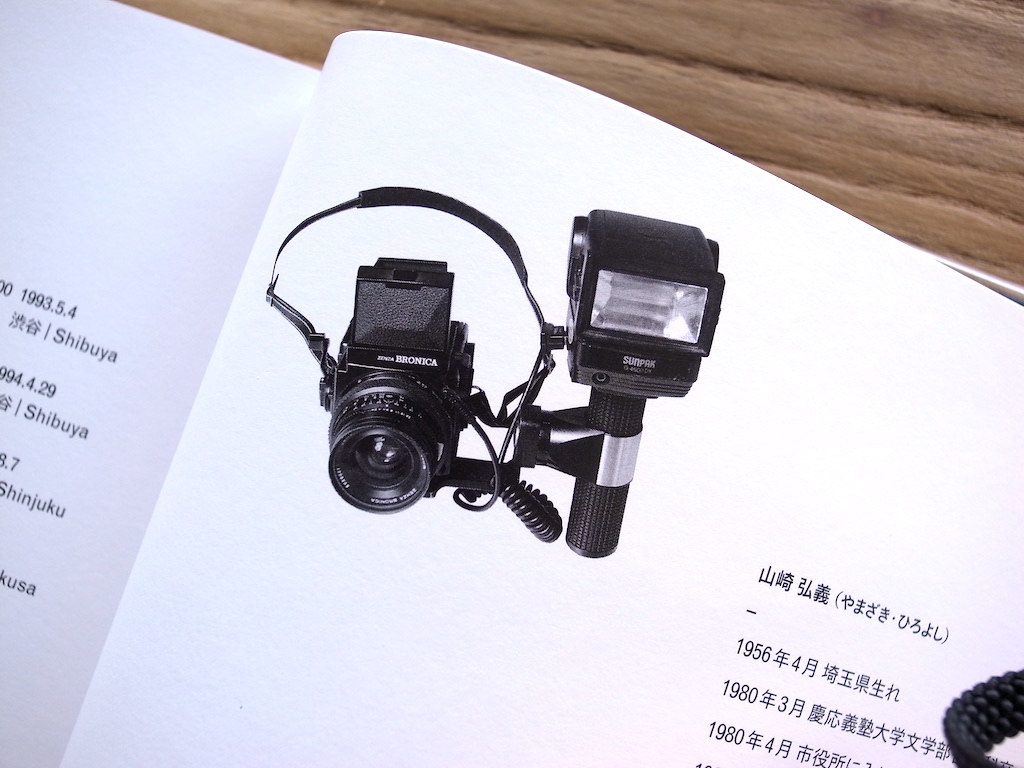
このセットアップがどれほど面倒なものであるか、一般の人にはなかなか理解できないと思います。ゼンザブロニカの一眼レフでは、フィルムは標準的な35mm一眼レフのように横方向ではなく、上下方向に横切ります。したがって、水平パノラマを撮るにはカメラを直角に構えなければいけません。こうすることで下を見ることができない上に、ウエストレベルのファインダーが横にずれてしまうことになります。しかもこのカメラのフォーカシングスクリーンは、ミラーの関係で逆になっているのです。
つまり山崎さんはカメラを横向きに構える必要があっただけでなく、ファインダーを覗くとすべてが逆になった状態で撮影していたのです。彼のフレーミングがこれほど自然で難なく感じられるのは、彼の技術、そしてカメラへの慣れの賜物なのでしょう。
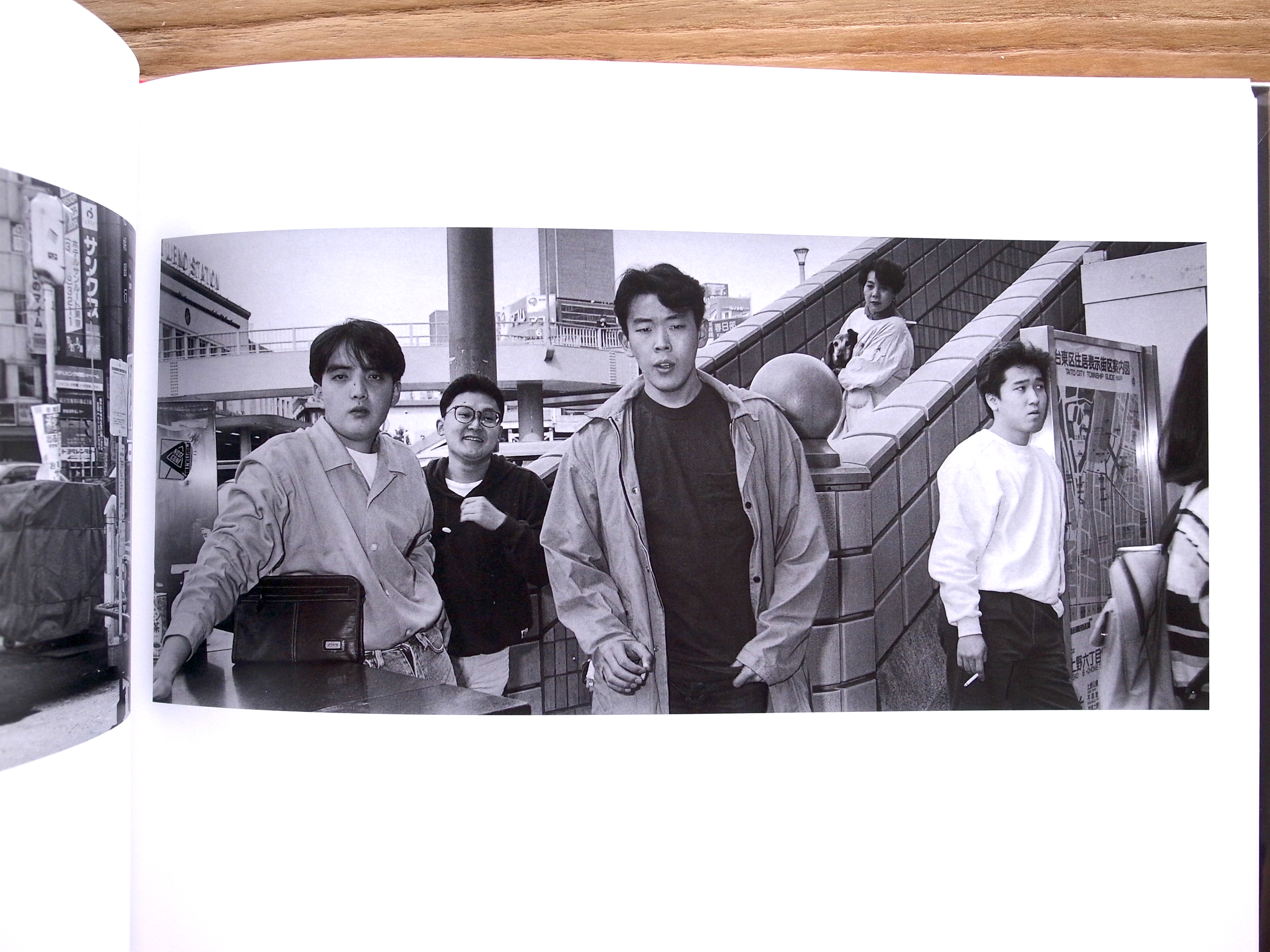
最後にこの本の構成について。表紙のデザインにコンタクトシートを取り入れたのは見事だと思います。印刷も鮮明で、画像をじっくり見ることができます。山崎さんは縦横に写真を撮っているので、正方形のレイアウトはよく考えられているように感じます。薄くて長い横長の写真集も面白いのですが、縦長の写真が入ることでバラエティに富んでいます。
山崎さんは『日本カメラ』で、パノラマを使うのは一種の「仕掛け」だと述べていますが、パノラマというフォーマットの本質的な良さを受け入れることで、そのアプローチを単なるギミックから時代のエネルギーにマッチした受容体へと昇華させることができたのです。それはどんな写真家にとっても挑戦であり、彼が見事に成功したからこそ、私はこの本の素晴らしさを伝え続けたいと思っています。
『CROSSROAD』はまさに傑作です。
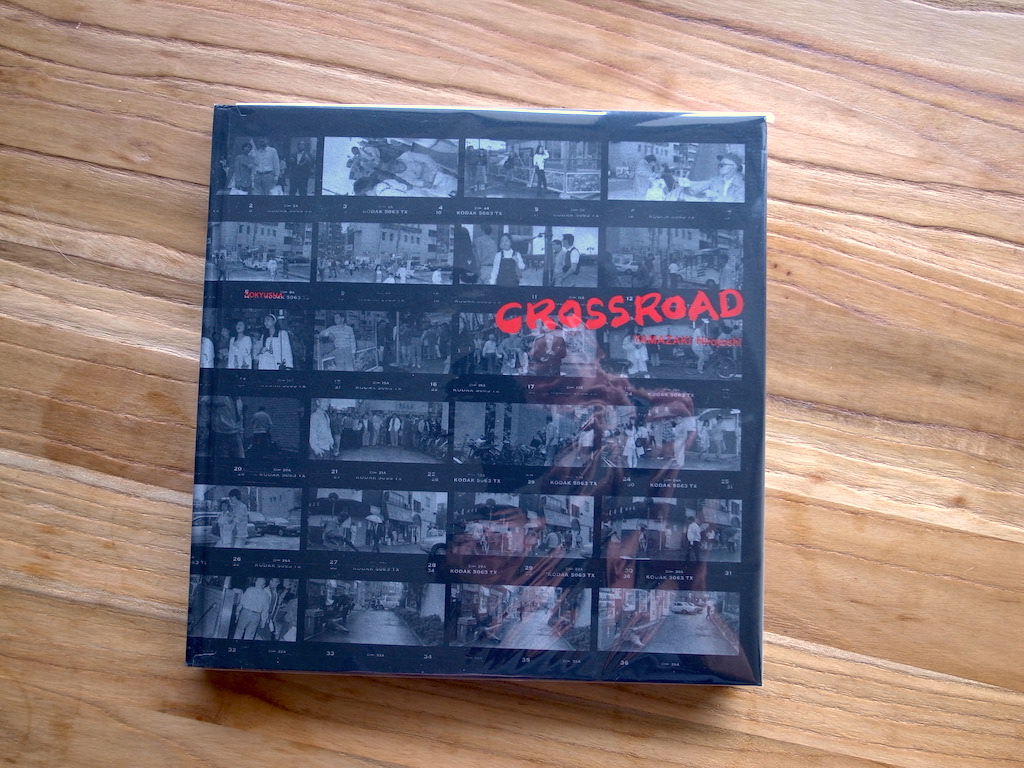
- Hiroyoshi Yamazaki "Crossroad"
- Publisher: Sokyusha, 2019
- 山崎弘義写真集『CROSSROAD』
- 発行:蒼穹舎
- 発行日:2019年10月10日
仕様:モノクロ、上製、A4変型、122ページ、作品点数113点、500部
装幀:加藤勝也
定価: 4000円(税別)- 『撮影期間は1990年から1996年の7年間。この期間は父が脳梗塞で寝たきりになり自宅で介護していた時期でもある。世間からは趣味でカメラをやっている人と言われる立場であり、内心忸怩たるものを常に胸にしまい込んでいた。なぜ東京をスナップしていたのか、特に問題意識があったわけでもない。スナップショットという当時の王道をとぼとぼと歩いていただけに過ぎない。今,感じることは写すという能動的な行為よりも,写り込んでくる事物にこそ写真の本質があるように思えてならない。また未来からの視線があったなら、もっと違う撮り方ができたはずだと自戒する。』(あとがきより抜粋)
- http://blog.livedoor.jp/sokyusha/archives/52177481.html
 26 Duets? Duels? Near-overlaps of time and Space across Tokyo. 東京の時間と空間が重なり合う写真集ツアー
2025/04/04
26 Duets? Duels? Near-overlaps of time and Space across Tokyo. 東京の時間と空間が重なり合う写真集ツアー
2025/04/04
 25 Naoki Ishikawa "TOKYO The City Where I Was Born" 石川直樹『東京 ぼくの生まれた街』
2024/01/05
25 Naoki Ishikawa "TOKYO The City Where I Was Born" 石川直樹『東京 ぼくの生まれた街』
2024/01/05
 24 山内道雄 Michio Yamauchi『TOKYO UP CLOSE』
2023/10/20
24 山内道雄 Michio Yamauchi『TOKYO UP CLOSE』
2023/10/20

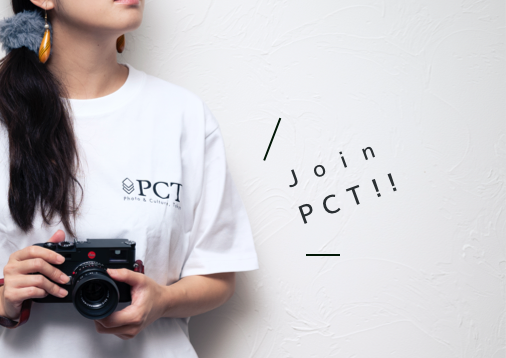
PCT Membersは、Photo & Culture, Tokyoのウェブ会員制度です。
ご登録いただくと、最新の記事更新情報・ニュースをメールマガジンでお届け、また会員限定の読者プレゼントなども実施します。
今後はさらにサービスの拡充をはかり、より魅力的でお得な内容をご提供していく予定です。
 「Photo & Culture, Tokyo」最新の更新情報や、ニュースなどをお届けメールマガジンのお届け
「Photo & Culture, Tokyo」最新の更新情報や、ニュースなどをお届けメールマガジンのお届け 書籍、写真グッズなど会員限定の読者プレゼントを実施会員限定プレゼント
書籍、写真グッズなど会員限定の読者プレゼントを実施会員限定プレゼント